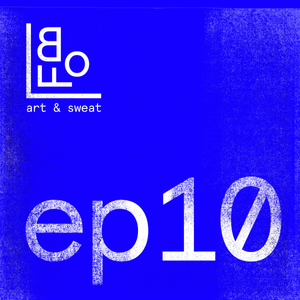
A starting point for this conversation was the essay ‘Arranging the Deck Chairs’ by Josephine Zarkovich, published by the Oregon Visual Arts Ecology Project this month, where she describes in no uncertain terms the disappearance of medium-sized arts spaces due to rising rents, declining college enrollments, and a diminishing middle class. This means few options for emerging artists to take the next step that doesn’t involve leaving the Northwest or giving it all up in favor of paid gigs.
The precarity of the worker in the gig economy applies also to the arts with the difference that art often has nothing to sell, at least not enough for individual artists to live on. Culture largely doesn’t return the same recognizable value that a product in the marketplace would, yet we are squeezing art into this economic model it isn’t fit for.
We reference the book ‘In the Flow’ by Boris Groys, where he explains why modern and contemporary art is necessarily unpopular, which of course doesn’t do it any favors on the free market. We live in a world that despises ambiguity, without which art becomes design and not art. Design is everything and art is nothing. Art doesn’t provide solutions, it only asks questions and creates more questions. It seems that art is funded when it takes on the task of design and becomes sellable as an object, or when it can prove to aid our ailing society. What does that do to artists and the nature of art?
We consider the always popular immersive and interactive experiences where technology often ends up taking over, and art is side-lined as a mere excuse for the spectacle. Whose agenda is being driven forward when art and tech are brought together? Arts funding doesn’t reflect today’s financial reality, and often leads to developing art for business, not for the benefit to society and public life. The government’s spending on art amounts to less than half a penny on a hundred dollar bill, with priorities obviously elsewhere. We talk about the differences in how we value culture, comparing the US and European countries like Sweden. Where does the motivation for nurturing culture lie? In the economic results that are produced or in its historically intrinsic value? This question can be framed on the one hand as the value of culture to the individual, and on the other as a social good.
Eugene Contemporary Art has been agonizing over the choice of going nonprofit or forming an LLC, asking ourselves: Who are you beholden to and what position does it put you in as an arts organization? The administrative burden of nonprofits is weighed against the financial pressure of the LLC. Fiscal sponsorship has been our alternative because it gives us an opportunity to innovate on the model of the organization, the risk being that this organizational effort entirely takes up our capacity. We agree with Josephine Zarkovich about the unsustainable nature of asking other artists for financial support. If we all just help fund each other’s projects, where does the money come from? How does money enter into this loop?
The idea of revenue filters into grant applications for arts funding in that they require quantitative proof of effectiveness and community engagement. We contend, that with government and state funding cut, the different grant giving foundations and trusts have become obliged to take on the burden of teaching art in the schools and providing accessible art, foreclosing funding for more challenging art and complex discourse, and thereby narrowing the field of art.
What are the systemic problems and what can we do about them on an individual level? How are you accountable if not quantitatively? Are the tools we use to build organizations neutral? We come back to the value of the mission statement as a tool for sticking to your politics, rather than your bottomline, weighing every decision against the mission statement. There is no getting away from politics since the 2016 election, and that’s a good thing.
Links:
‘Arranging the Deck Chairs’ by Josephine Zarkovich: https://oregonvisualarts.org/portfolio-items/arranging-the-deck-chairs/?portfolioCats=4051
‘Books: Organizing the Future’ by James McAnally: https://www.artinamericamagazine.com/news-features/magazines/books-organizing-future/
‘In the Flow’ by Boris Groys: https://www.versobooks.com/books/2525-in-the-flow
New Inc: https://www.newinc.org/
Meow Wolf: https://meowwolf.com/
A manifesto written for The Luminary in St. Louis by James McAnally: http://temporaryartreview.com/the-work-of-the-institution-in-an-age-of-professionalization/
05/29/19 • 71 min
Episode Comments
0.0
out of 5
No ratings yet
eg., What part of this podcast did you like? Ask a question to the host or other listeners...
Post
Generate a badge
Get a badge for your website that links back to this episode
<a href="https://goodpods.com/podcasts/bottleracks-and-fountains-1898/arts-mission-is-culture-critical-7462360"> <img src="https://storage.googleapis.com/goodpods-images-bucket/badges/generic-badge-1.svg" alt="listen to art's mission is culture-critical on goodpods" style="width: 225px" /> </a>
Copy